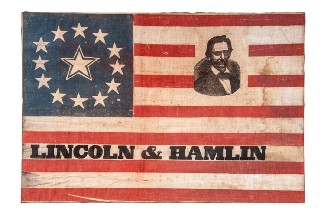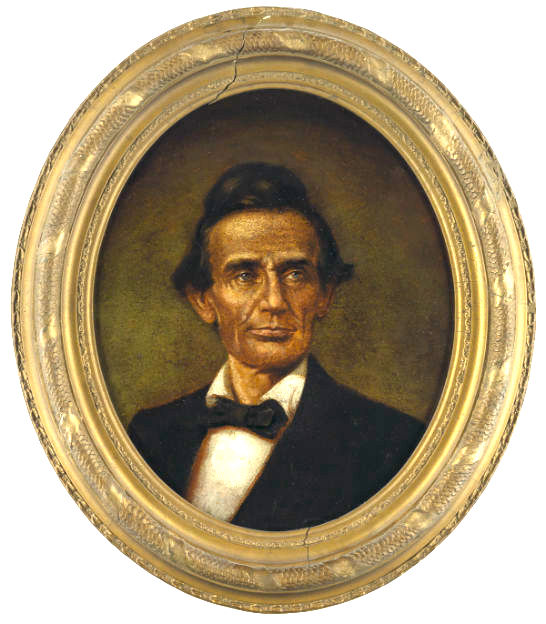
NEW YORK – Abraham Lincoln stands tall in American history as he did in life, viewed as second only to George Washington in the pantheon of presidents. You can reasonably argue that Lincoln should rank first; Washington made the United States a reality, but Lincoln kept it together despite the dire threat of splintering.
Lincoln has earned an honor that only the greatest American presidents receive. Though material relating to the presidents—even the worst ones—has value, the realm of Lincoln collectibles has spawned a distinct, dictionary-listed word: Lincolniana.
That word is more of an umbrella term, because it covers a startlingly broad range of items. Lincolniana collectors find themselves competing with collectors of campaign memorabilia, autographs and manuscripts, ephemera, early photography and presidential material. That list of Lincoln collectibles doesn’t include coins struck with Lincoln’s image, or the 15,000-plus books written about the man, or the Augustus Saint-Gaudens sculptures, or Salvador Dalí’s 1976 painting Lincoln in Dalí-vision, or any other cultural artifacts produced in the decades after he passed into legend.
“The most valuable items were associated with Lincoln during his lifetime, beginning with the rise of his political career and ending with his assassination,” says Wes Cowan, founder and principal auctioneer at the eponymous auction house. “Anything within that range will be more desirable than post-assassination material.”
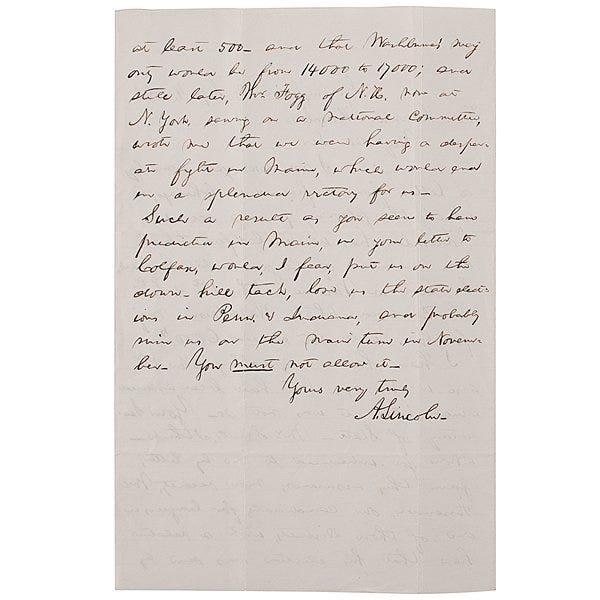
Lincolniana stands apart from other types of collectibles as well, in that there’s a lot of it, and it generally tends to hold its value. Like the works of Andy Warhol and Pablo Picasso, Lincolniana is voluminous enough to sustain market momentum and offer collectors several different points of entry.
Lincoln’s handwriting appears on hundreds of thousands of documents, including 20,000 to 25,000 officers’ commissions that he signed during the Civil War. The shocking nature of his death—the first American president to die by assassination, killed by one of the country’s most popular actors on Good Friday, prompting many ministers to devote their Easter Sunday sermons to the murdered leader—moved Americans to keep things that reminded them of Lincoln. “The people who witnessed Lincoln’s death hung onto [material] not for collectibility, but for trauma,” says Bobby Livingston, executive vice president at RR Auction. “It survives because of who Lincoln was.”

Of course, the finest Lincolniana pieces continue to rise. In 2012, Cowan’s Auctions sold a Sept. 4, 1860 letter Lincoln wrote to Hannibal Hamlin, his running mate, on the importance of winning Hamlin’s home state of Maine. Chuckling, Cowan recalls it as the “You will not lose Maine” letter. “It was a remarkable letter, a known letter, consigned by Hamlin’s great-grandson, who was also named Hannibal Hamlin,” he says, recalling that it sold for $60,000. The previous lot in the same Cowan’s sale showcased an even more historically important letter in which Lincoln introduced himself to his future vice president. Unfortunately, at some point, the Hamlin family granted the request of an autograph collector and cut the Lincoln signature out for him. The injured letter sold for $20,000. “That’s called clipping the signature. Clipped autographs are very common in the autograph world,” he says. “When you clip the signature from a document, it ruins the document.”
Some Lincoln collectibles count as relics. RR Auction gained wide media coverage for a 2020 lot that was intrinsically linked to Lincoln’s assassination. It consisted of a generous lock of the president’s hair, taken during a postmortem examination of his body and given to Dr. Lyman Beecher Todd, a cousin of Lincoln’s wife, Mary Todd Lincoln. Dr. Todd, who attended the postmortem, wrapped the lock in a telegram he had received at 11 pm on April 14, 1965, and scribbled “Hair of A. Lincoln” in pencil in the lower right corner. The lot sold for $81,250.
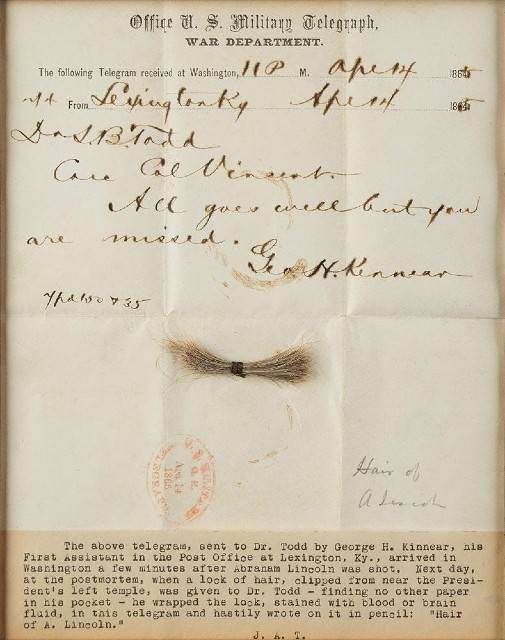
“We’ve offered a few other locks of Lincoln’s hair, but we’d never handled one that was this important,” Livingston says, adding that it was “controversial because some people didn’t understand it.” Specifically, the 19th century practice of keeping a lock of hair from a loved one seems odd two centuries onward. The conditions under which this lock was collected, with Lincoln unable to consent and the telegraph paper slightly but clearly stained by bodily fluids absorbed by the hair, can come off as distasteful. But that very detail, along with the time-stamped telegram and the pencil notation from Dr. Todd, testify that it’s genuine. “With this, provenance is everything,” he says. “It’s a relic, and an important and tragic one that encapsulates this horrible event.”
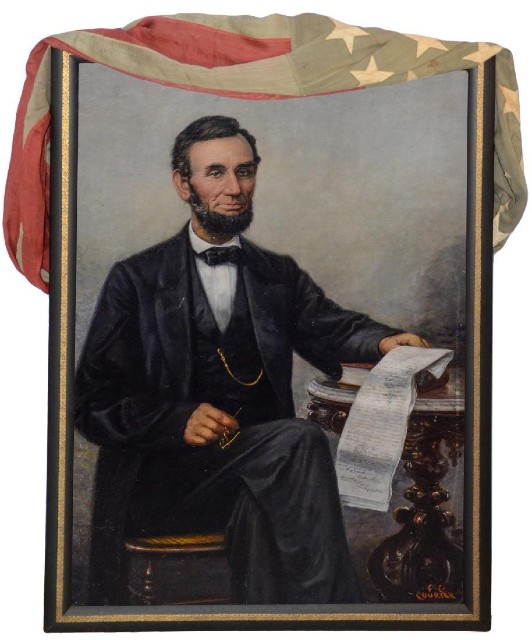
Lincolniana from his two presidential campaigns can perform well at auction. The people at Abell Auction were delighted when an 1860 campaign flag featuring a picture of a beardless Lincoln rocketed past its $30,000 to $40,000 estimate to sell for $110,000 in May 2019. “It’s a different category of collectible,” says Pat Abell, director of client services for the California auction house. “You don’t see things like this.” The rare flag caused a stir among Lincoln collectors. Abell recalls 250 people attending the sale in person and 40 departing after the Lincoln campaign flag was hammered down. He credits the presence of an image of Lincoln, who looks weirdly unfinished without his beard, with driving the bidding so high. If the flag hadn’t featured Lincoln’s face, Abell estimates it would have fetched “10 percent of that, and I’d have been OK with that. I think it would have been a good price.”
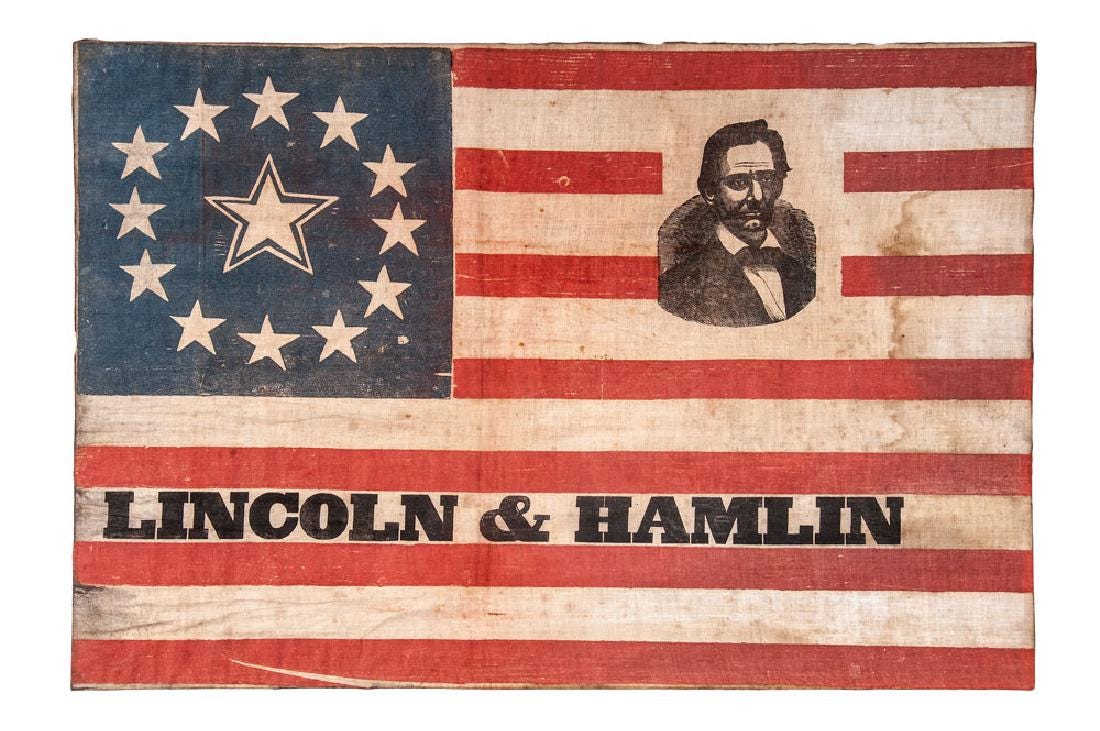
Though subsections of Lincolniana may lag at times, the overall market chugs along steadily, impervious to the effects of milestones such as the 200th anniversary of Lincoln’s birth in 2012 and the release of movies starring him. “Lincoln has stood the test of time,” Livingston says. “He has never been forgotten. He’s a pivotal figure in our national history like Washington—a beacon of democracy.”


